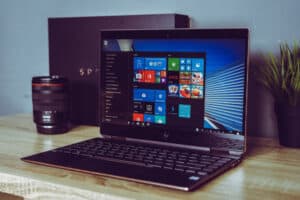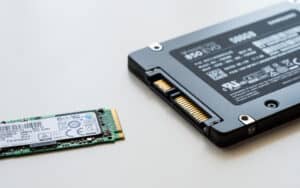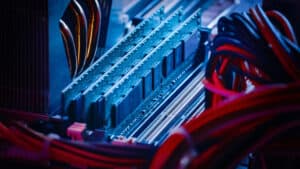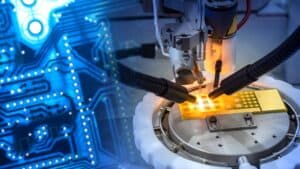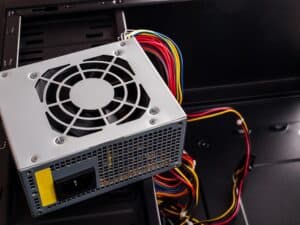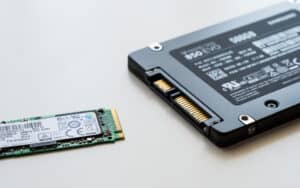
Trying to complete your assignment or trying to make a presentation you have to present in class tomorrow, and you find your laptop beeping? Or you are next in line for a class presentation, and your laptop starts to make beeping noises instead of turning on? Hardware problems within your device may cause beeping noises.
Your laptop is beeping mainly due to a hardware malfunction. The beeping sound must be coming from your motherboard as manufacturers often add such features to assist in debugging the hardware problem faster.
Laptops are sensitive devices. A power surge while charging or dropping it slightly might cause hardware problems that might not be apparent from the outside. This is why it’s important that you continuously take care of your laptop and should not ignore any unusual activity exhibited by it.
Read on to discover why your laptop is beeping and what the beeps mean!
Continuous Beeping on Your Laptop
Your laptop’s beeping pattern on startup is intended to convey its status. One long, continuous beep indicates a hardware issue that might prevent your laptop from starting and is frequently memory-related.
You must examine your laptop’s internal hardware if you cannot start it correctly. In the best situation, the gadget can reset and resume regular operations. The worst-case scenario is that your laptop has a serious hardware issue that needs to be fixed or replaced.
But before getting into the troubleshooting steps, first, let’s identify what the beeps mean. Usually, a pattern of a certain beep means something regarding the device.
Identifying Beep Codes
Each motherboard manufacturer uses a unique series of sounds to indicate hardware problems. By attentively listening to these noises and using the manufacturer’s website or just a simple Google search of the beep codes, you should be able to determine the issue. However, it is great that you won’t recall the code sequence the first time you hear it since these beeps have a distinctive rhythm.
Restarting your laptop is advised, and you should pay close attention to the sound pattern. Note the number of beeps and timing. Check whether there are breaks in the beeping or if the beeps are brief, prolonged, high-pitched, or low-pitched. You can repeat this procedure as often as necessary to write the precise beep sequence without risking the problem getting worse by restarting multiple times.
You can find your motherboard manufacturer using the laptop’s BIOS. When turning your device on, press or hold your BIOS key (depending on the laptop) for the BIOS screen to appear. You can then identify the motherboard manufacturer. You can also identify the manufacturer using a quick Google search of your laptop’s model number.
AWARD BIOS
AWARD BIOS is one of the most common motherboard manufacturers, and there is a chance that your laptop might be hosting a motherboard made by them. AWARD BIOS beeps often occur quickly, one after the other, and might vary in volume.
Like most BIOS codes, it uses a single brief beep to signal that the system is operational and everything is in order. Every time your laptop starts up, you can hear it, but that doesn’t necessarily imply you need troubleshooting.
Here are some beep codes and their meaning.
- 1 long and 2 short beeps: This beep indicates an error with your laptop’s video card. For example, your video card might be damaged or is not connected properly.
- 1 continuous beep: If the beep doesn’t stop, it is a memory error.
- 1 long and 3 short beeps: This beep code also indicates an issue with the memory card.
- Alternating high-pitched and low-pitched beeps: This beep code signifies overheating issues with your CPU.
If you hear a different beep code than this, then Google search your beep code, and you will find a manual to help you identify what it means. You can do the same with your motherboard manufacturer’s name, and you will be able to find a manual that will explain to you in detail what the beeps mean.
Troubleshooting
As previously indicated, the beeps you hear during startup indicate hardware-related problems. You ought to be able to identify the underlying issue that caused the sounds by using the beeps. However, you might attempt some common fixes to see if they help stop the beeping before taking drastic actions, like replacing components.
Here are some troubleshooting steps you can take.
Restart Your Device
Restarting the device may help eliminate momentary issues with hardware drivers, even when beep codes signify issues with hardware components. Restarting the laptop can determine whether the problem is serious and whether additional hardware steps are necessary.
You won’t likely be able to boot the device and restart the system when you hear beep codes. Remove the battery after pressing and holding the power button until the laptop turns off. It’s a good idea to unplug all plugged-in items, including LAN cables, keyboards, and mice. Please note that removing the battery is a risky step, and do not try to start the laptop without it.
You can start your laptop without the battery as long as your laptop is connected to the main power cable and necessary precautions are taken. However, it is still something that should be done by a professional.
You can now put the battery back in and then try to start your device again to see if the problem persists.
Check Cooling Mechanisms
The system may experience issues due to overheating, resulting in beep codes. Ensuring that the laptop’s cooling mechanisms are all operating correctly is crucial. Check the fans first, ensuring they function properly and that all the connections are sound. Next, clean the vents on the laptop’s back cover and the fan blades to improve their ability to move.
It is best just to remove the back cover, clean the external connections and fans, and do not disassemble the rest, as that should be done by a professional and, if not done right, can cause damage to your device.
Check Connections
Remove the back cover and check connections if the above steps do not fix your issue. Even though this is not recommended, you can do this to be sure that any connection issues are not causing the beeps.
These connections may be internal or exterior, incorporating power cords and other accessories. If everything looks good after checking all the external connections, you may go on to the interior components.
You should examine the CPU, GPU, RAM, and hard drive connections. They are connected by data cables, power cables, and other components; thus, thoroughly check each by taking them apart and putting them back together.
Conclusion
Hopefully, with the guide above, you can identify the cause of the beeps in your laptop and, after getting it fixed, can get back to your tasks.
